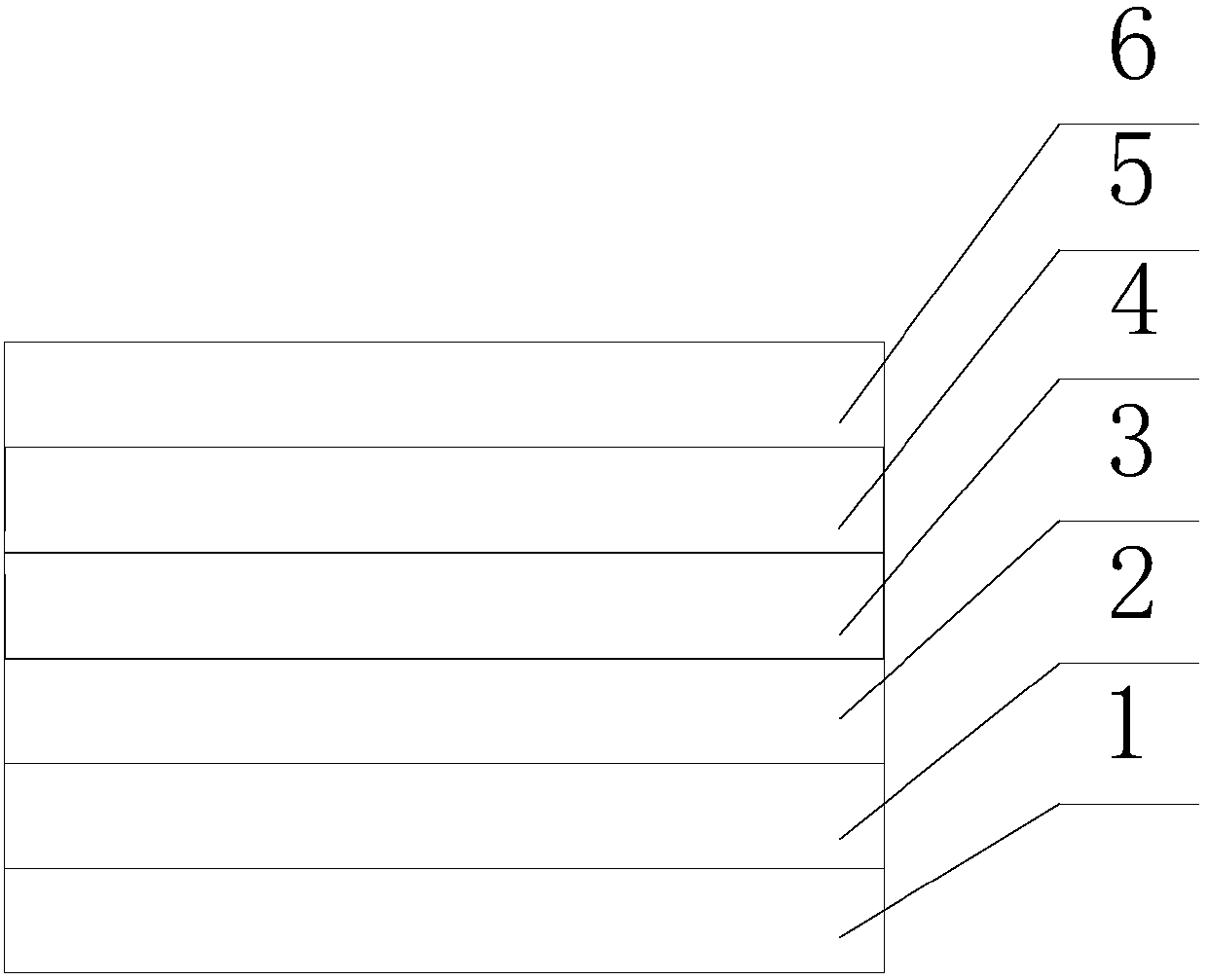Perovskite solar cell and preparation method thereof
A solar cell and perovskite technology, which is applied in circuits, photovoltaic power generation, electrical components, etc., can solve the problems of insufficient stability and low photoelectric conversion efficiency of solar cells, so as to improve photoelectric conversion efficiency and hole transport capacity , to avoid the effect of equipment cost
- Summary
- Abstract
- Description
- Claims
- Application Information
AI Technical Summary
Problems solved by technology
Method used
Image
Examples
Embodiment 1
[0038] A perovskite solar cell, such as figure 1 shown, in turn comprising conductive glass or flexible substrate 1, NiO x Hole transport layer 2, perovskite absorption layer 3, electron transport layer 4, buffer layer 5, metal electrode layer 6, conductive glass substrate is selected as FTO conductive glass, and its specific preparation steps are as follows:
[0039] A. Treatment of FTO conductive glass substrate 1: The square resistance of FTO in FTO conductive glass is 14Ω, and the transmittance is 90%. After the substrate is cleaned, put the conductive side up into the UV ozone machine, and set the processing time For 5 minutes, turn on the ultraviolet lamp, carry out ultraviolet and ozone treatment to it, and take it out for later use after completion;
[0040] B. NiO x Preparation of the hole transport layer 2: dissolving yttrium oxide in nitric acid to prepare 0.1mol / L yttrium nitrate solution, dissolving lithium nitrate and nickel nitrate in deionized water to prepar...
Embodiment 2
[0047] A perovskite solar cell, such as figure 1 As shown, sequentially including ITO conductive PI substrate 1, NiO x Hole transport layer 2, perovskite absorption layer 3, electron transport layer 4, buffer layer 5, metal electrode layer 6, the conductive layer of the conductive glass substrate is selected as FTO, and its specific preparation steps are as follows:
[0048] A. The treatment of ITO conductive PI substrate 1: the square resistance of ITO is 8Ω, and the transmittance is 86%. Ultraviolet lamp, carry out ultraviolet ozone treatment to it, after finishing, take out standby;.
[0049] B. NiO x Preparation of the hole transport layer 2: dissolving yttrium oxide in nitric acid to prepare 0.1mol / L yttrium nitrate solution, dissolving lithium nitrate and nickel nitrate in deionized water to prepare 0.1mol / L lithium nitrate and nickel nitrate solution, and mixed with yttrium nitrate solution, adding sodium hydroxide solution, adjusting the pH value to 10 to obtain a s...
Embodiment 3
[0056] A perovskite solar cell, such as figure 1 As shown, including 1, conductive glass substrate, 2, NiO x Hole transport layer, 3, perovskite absorption layer, 4, electron transport layer, 5, buffer layer, 6, metal electrode layer, conductive glass substrate is selected as ITO conductive glass, and its specific preparation steps are as follows:
[0057] A. Treatment of ITO conductive glass lining 1: The square resistance of ITO is 8Ω, the transmittance is 86%, and the transmittance is 86%. After the substrate is cleaned, put the conductive surface upward into the ultraviolet ozone machine, set The treatment time is 5 minutes, turn on the ultraviolet lamp, carry out ultraviolet and ozone treatment on it, and take it out for later use after completion;
[0058] B. NiO x Preparation of the hole transport layer 2: dissolving yttrium oxide in nitric acid to prepare 0.1mol / L yttrium nitrate solution, dissolving lithium nitrate and nickel nitrate in deionized water to prepare 0....
PUM
 Login to View More
Login to View More Abstract
Description
Claims
Application Information
 Login to View More
Login to View More - R&D
- Intellectual Property
- Life Sciences
- Materials
- Tech Scout
- Unparalleled Data Quality
- Higher Quality Content
- 60% Fewer Hallucinations
Browse by: Latest US Patents, China's latest patents, Technical Efficacy Thesaurus, Application Domain, Technology Topic, Popular Technical Reports.
© 2025 PatSnap. All rights reserved.Legal|Privacy policy|Modern Slavery Act Transparency Statement|Sitemap|About US| Contact US: help@patsnap.com



